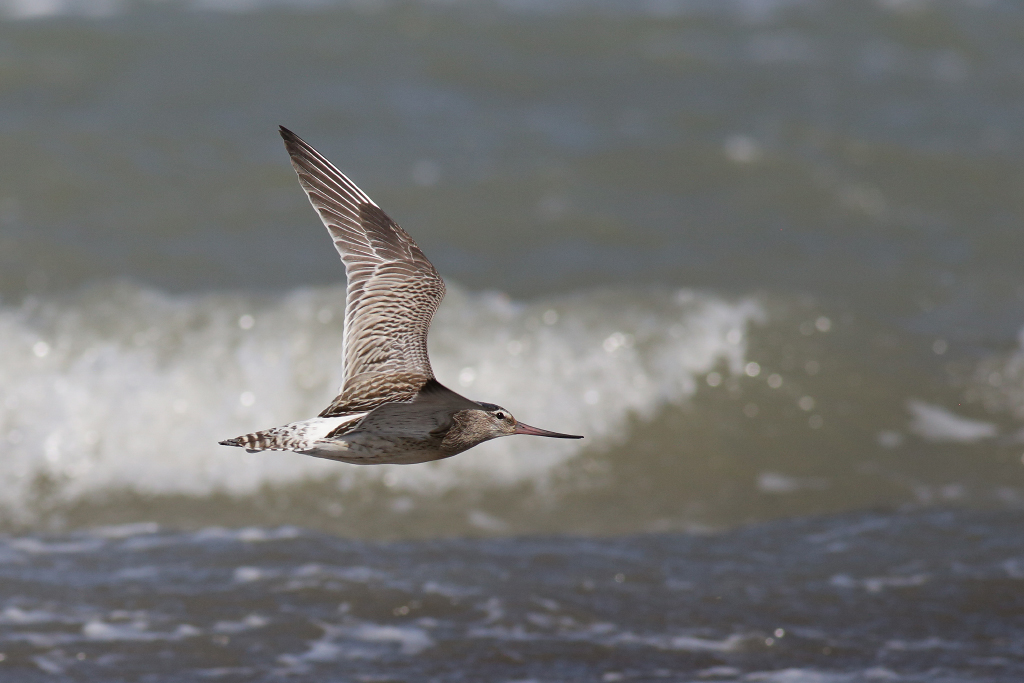The website guinnessworldrecords.com of the Guinness Book of Records has just officially confirmed a record of a bird belonging to the striped-tailed godwit (godwit is a large seabird with a long and pointed beak), also known as Limosa lapponica. Given the code number 234684 by scientists, this bird traveled over 13,560 km without eating or resting, earning it the title “The bird that can fly continuously.” over the longest distance in the world” – according to the Guinness Book of Records.
It is known that scientists attached a 5G satellite positioning device to the bird, and tracked it through data obtained from satellites. Bird “234684” took 11 days to travel from the coast off the coast of Alaska to the Australian state of Tasmania.
” The distance this bird has traveled is equivalent to the length of the airline route connecting London (UK) with New York (USA), or approximately 1/3 of the earth’s circumference. Also. According to collected data obtained from a satellite device attached to its lower body, this incredible journey began on October 13, 2022, and lasted continuously for 11 days and 1 hour without needing to land even once ” , said the Guinness Book of Records.

According to estimates, about 70,000 striped-tailed godwit birds make the migration across the Pacific Ocean each year. Godwit spend the summer breeding in western and northern Alaska (USA), then gather on the Alaska Peninsula in the fall to make the long flight to winter in New Zealand and southeastern Australia. In spring, they make the opposite journey.
However, in the case of the godwit bird with code number 234684, it made an impressive 90-degree turn and landed on the shore of Ansons Bay in the eastern state of Tasmania, Australia, instead of New Zealand like its counterparts. me.
According to Birdlife Tasmania expert Eric Woehler, the godwit bird with the code number 234684 was lucky to survive the journey across the vast Pacific Ocean and countless islands, including New Caledonia and Vanuatu – where it seems to be. missed the opportunity to “resuscitate” when unable to land on the water to feed.
“Seabirds such as Short-tailed Shearwaters can land on the water and feed. However, if a godwit lands in the water, it will die. Due to the lack of a membrane on its feet, the godwit will not How to surface and escape from the water. So if it falls to the ocean surface due to exhaustion, or if bad weather forces it to land, that’s the end, “ expert Eric Woehler analyzes. According to this expert, bird 234684 may have lost ” at least half of its body weight during continuous flight day and night. ”

This is not the first time striped-tailed godwit birds have set a world record. The previous record also belonged to a striped-tailed godwit, set in 2020, when it flew continuously for a distance of 13,225km, about 349km less than the current record. In 2007, another striped-tailed godwit also set a record by flying 11,500km non-stop.
However, striped-tailed godwit are not the only seabirds that can fly great distances across oceans. Arctic terns (Sterna paradisaea) can often fly longer distances over the course of a year.
Including the round trip from their breeding sites north of the Arctic Circle to Antarctica and back, these industrious seabirds can travel up to 80,000 km, making them a bird species. Migrants have the longest travel distances overall. However, the main difference is that they occasionally land during their journeys.
Why can seabirds fly long distances without needing to rest or eat?
Although most migratory birds are capable of flying many miles in search of food and shelter from the cold, only a few bird species are able to physically change in response to environmental conditions. .
They can dramatically change the body and metabolism by shrinking the size of internal organs, rapidly gaining weight and burning stored fat, virtually sleeping and many of the same qualities as Other super powers besides.
In particular, to make room for energy-rich fats, striped-tailed godwit birds absorb 25% of the tissue that forms their digestive tract, liver and kidneys. This is possible through a biological process called autophagy, a mechanism that allows the body to recycle parts of itself when needed.
Striped-tailed Godwits may also make their heart and chest muscles larger mid-flight to provide more energy and oxygen to these areas. However, these extraordinary skills have some disadvantages. These physical changes make striped-tailed godwit birds more vulnerable to natural and man-made hazards, as they lack the energy needed to fly long distances.





